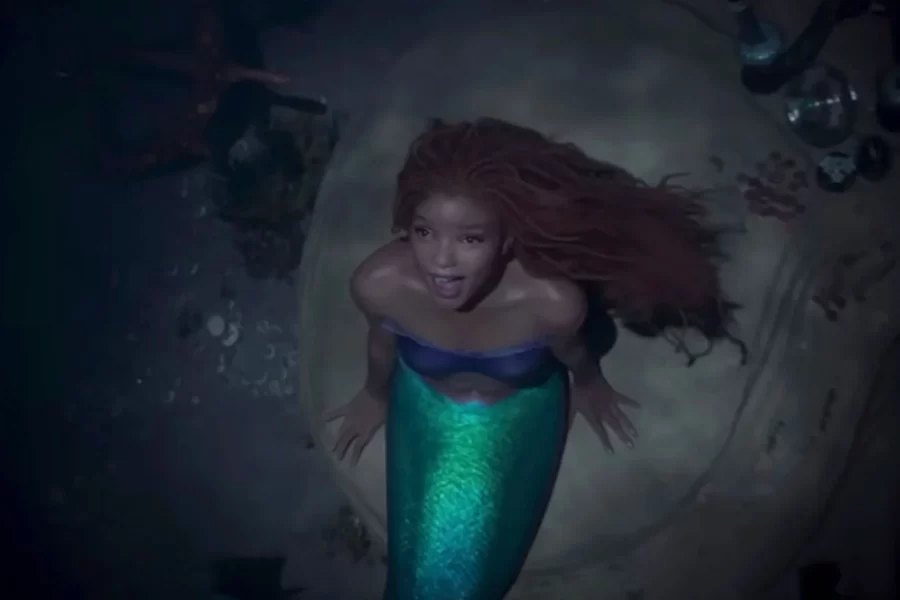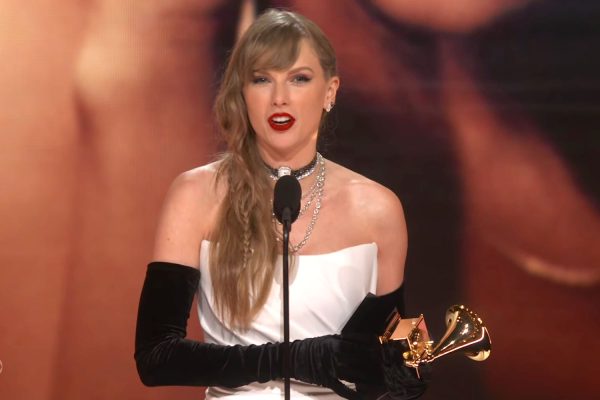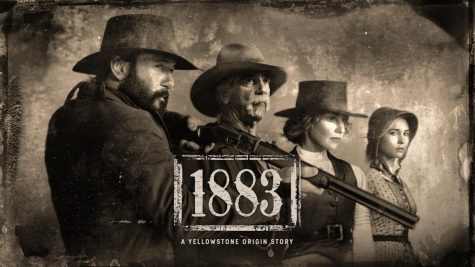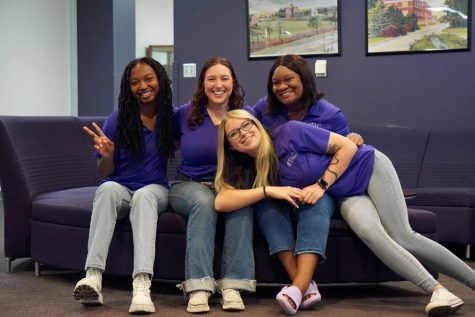That’s not scientifically accurate
Black little mermaid makes a splash
Disney fans all over the world were given controversial news in the form of the live action film, “The Little Mermaid.” It was not the vocals nor the realism of the film that stirred a reaction from people world wide, but the casting decision. There was already backlash regarding the casting decisions when the cast list was first announced in June 2019. Many had issues with the fact that the live action mermaid princess no longer looked the same way she looked in the 1989 animated film.
Halle Bailey, an American singer and actress, rose to fame through a musical duo with her twin sister Chloe Bailey. They got their start on Disney when they were crowned by Radio Disney as the winners on the fifth season of The Next Big Thing (NBT) in Dec. 2012. Appearing in “Grown-ish,” “Last Holiday,” and Disney classic “Let It Shine,” this 22 year-old, African-American woman hailing from Atlanta, Georgia, is the person portraying the infamous mermaid princess, Ariel.
The minute the announcement of a black Ariel spread, the internet was split in two, showcasing who was for and against this casting decision. One half believes this is a win, a victory for African-American media representation, the latter half feels as if they have been stripped of the original concept of the little mermaid who no longer looks like them. Unfortunately the argument is not taking place between the children, whom the movie is aimed at, yet the adults are airing out their grievances towards the Disney movie casting choices.
One of the main arguments the adults have against the black mermaid is the fact it is not scientifically accurate.
“With “The Little Mermaid,” can we just mention that, from a scientific perspective, it doesn’t make a lot of sense to have someone with darker skin who lives in the deep ocean,” political commentator Matt Walsh claimed.
Walsh further clarified that many deep sea creatures are translucent, so mermaids should be translucent as well. The issue is that many ran with the claim that she should not be dark skinned making it scientifically inaccurate and are claiming this is why they hate/will not watch the movie. However, the reason this argument fails is that there are in fact ultra-black animals that live in the midnight or bathyal zone, a region of the open ocean that extends from a depth of 1,000 to 4,000 meters below the ocean’s surface. This is also where mermaids are theorized to inhabit. Animals such as the pacific black dragon prove that there can be dark skinned sea animals, and Ariel could be much darker than she currently is. There is also the fact that they are able to go to the surface frequently and breathe normally, similarly to an orca, thus it can be argued that she should have a dark top side, her back and her stomach area paler. For a live action adaptation of this, she could have vitiligo, a condition that causes loss of skin color in patches, celebrities such as Winnie Harlow demonstrate an example of this condition.
The main and most obvious reason that this argument is illogical is that mermaids have not yet been proved as real. There are singing and dancing fish, mammals, and crustaceans. As the movie is a cartoon movie based on nonexistent characters, it is nearly impossible for it to be scientifically accurate or inaccurate.
Another common argument against Halle Bailey as Ariel is her lack of natural red hair. Many feel as if Halle’s artificial red hair is not sufficient in comparison with Ariel’s vibrant red hair. Some go on to say they feel as if there is not enough ginger representation in the media.
Regarding the natural vibrancy of her red hair, Ariel in the animated film had bright red hair, however it is virtually impossible for a person to be born with crimson red hair. Redheads or gingers make up two percent of the world’s population as recorded on luxeluminous.com. Nevertheless, these hair colors usually span from bright copper, burnt orange, auburn, and strawberry blonde. Meaning, even if there was a natural redhead, it would not be the same color. This means they would have to artificially dye their hair or give them artificial hair to get that same color. So, it should not be an issue for a black person to play Ariel with artificial hair if there is no issue with a white person with artificial hair.
Continuing with the notion there is no redhead representation in Disney media: Peter Pan (Peter Pan), Jessie (Toy Story 2 and 3), Giselle (Enchanted), Merida (Brave), Anna and Hans (Frozen 1 and 2), and Ellie (Up). This is a small portion of major characters from classic Disney movies with red hair, there are a wide variety of characters with red hair that have been shown in the media that have yet to be mentioned.
All of this is not to say that it was right or wrong for them to cast Ariel as a black woman, but the decision has been made, the movie has already been filmed and it will release May 2023. Ariel’s physical appearance does not in any way affect the plot or storyline of the movie.
The plot being a mystical ocean sea creature feels out of place in the ocean and misunderstood, she longs to be with humans living on land but her father, the god of the sea, forbids her.
She then takes it upon herself to make a deal with the sea witch for legs in exchange for her voice if she can get the human she falls in love with to love her back. While casting more inclusive characters is indeed a step in the right direction, it can be argued that Disney should stop making black characters turn into animals or other beings in their films. They should create more characters that are persons of color in their films with their own storylines that do not have to do with struggling based on their economic class or skin color. Once again, the physical appearance of Ariel has nothing to do with her storyline, so it should not matter that a fictional character looks different in the live action than in the animated version.
Many take this announcement of another black princess to be hateful, with the teaser receiving over 1.5 million dislikes on youtube. Hate pages on Facebook such as ‘Chirstian against the Little Mermaid,’ have spread fostering ill will towards a children’s movie.
Focusing less on the hate and more on the positive, Tik Tok has been flooded with reaction videos of black children showcasing their excitement of seeing a princess that looks like them. Historically, black people in the media have been underrepresented, so for many African-Americans seeing their favorite princess look like them makes them feel included.






